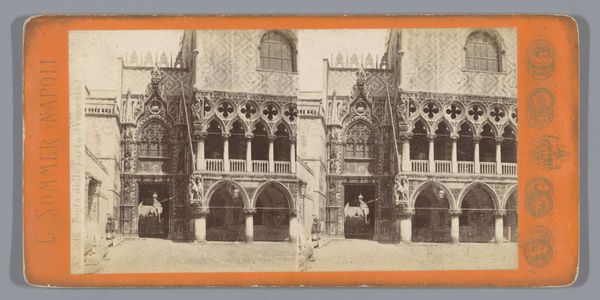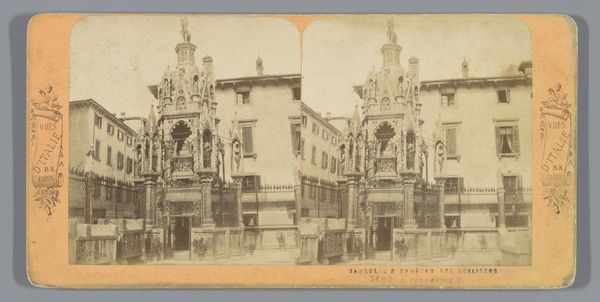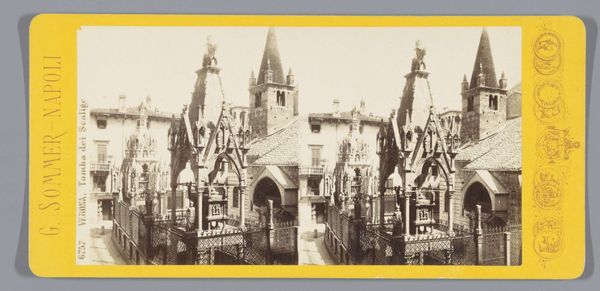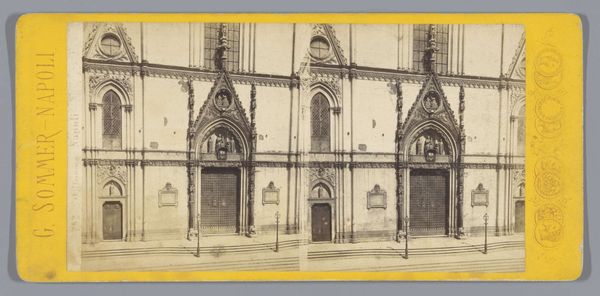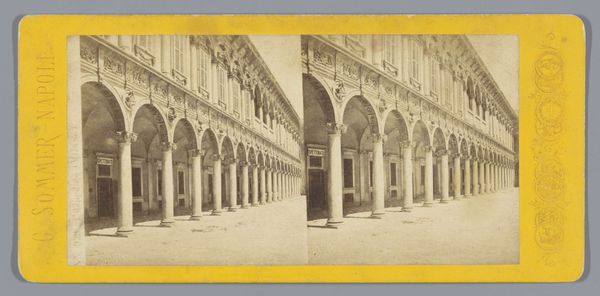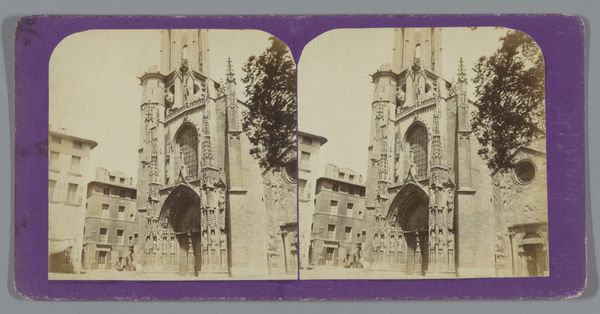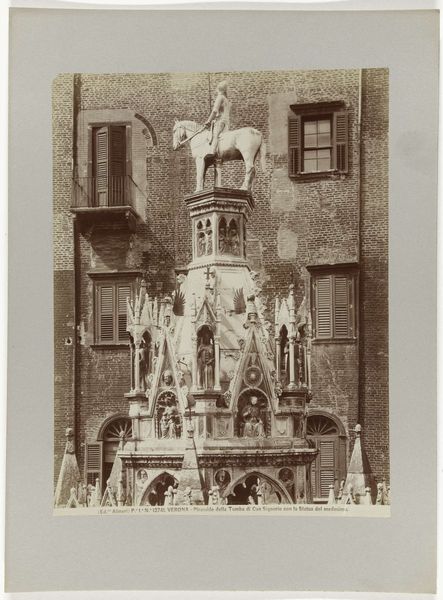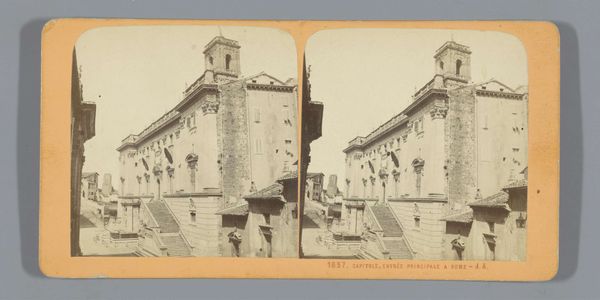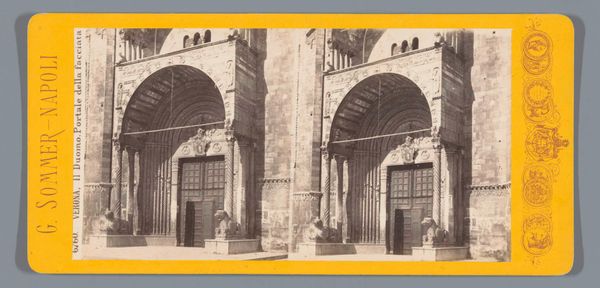
Dimensions: height 85 mm, width 178 mm
Copyright: Rijks Museum: Open Domain
Editor: This is Giorgio Sommer's photograph, "Gezicht op de Arche scaligere in Verona," taken sometime between 1860 and 1880. It's a sepia print, quite small. The stark contrast between the delicate architecture of the tombs and the plain building behind is striking. What do you see in this piece, beyond just a city view? Curator: Immediately, the Scaliger tombs present themselves as powerful symbols of lineage and memory. Think of the arch – a transitional space, not just between life and death but between visibility and invisibility. Notice how the photograph flattens the space, compressing the distance between the ornate tombs and the severe facade. Editor: So, it's less about the literal depiction and more about the… symbolic weight? Curator: Precisely! Sommer uses the architecture to evoke a sense of historical weight and the persistent power of family legacy. What stories might these families tell themselves, and wish to project? Consider the intricate details of the tombs – are they declarations of power, attempts at immortality, or both? Editor: It's interesting how photography, which we often think of as capturing reality, can be so effective at creating a symbolic space. It definitely makes you consider what stories architecture can tell. Curator: Yes, it transcends mere documentation. It's about summoning a particular mood, evoking an echo of a past, and shaping our perception of history itself. A photograph may be indexical but here it asks us what traces it can evoke. Editor: I'll certainly look at photographs, and architecture, differently now! Curator: And hopefully, consider the narratives we construct around them.
Comments
No comments
Be the first to comment and join the conversation on the ultimate creative platform.
